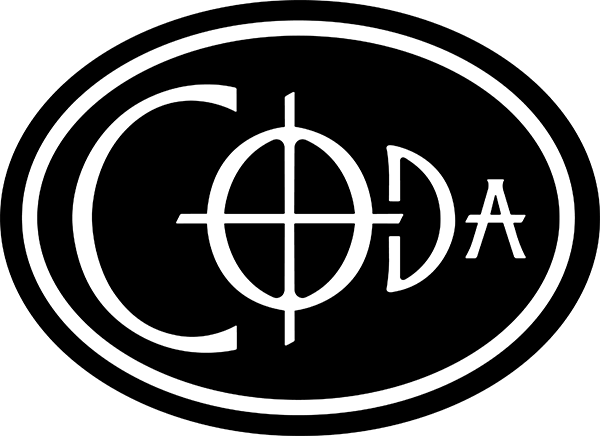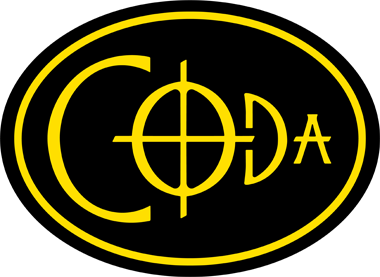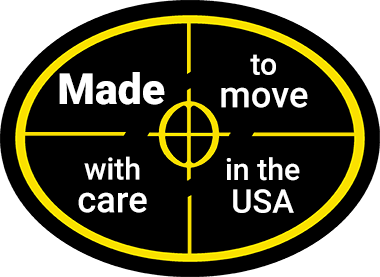An Introduction to Coda If You Don’t Own One Yet
If you don’t own a Coda EDC Flute yet, here’s an introduction to what Coda is all about.
Coda is a flute –in the vessel flute family– that is just five inches long (or 12.7 centimeters) from nose to tail. Compared to Coda, a 12-inch-long soprano recorder seems huge. But even though Coda fits in the palm of your hand, it has a full, beautiful sound and plays 2 complete chromatic octaves, from C5 to C7. In less technical language, that’s the notes C, D, E, F, G, A, B, C, D, E, F, G, A, B, C, or C to C to C, with all the sharps and flats in between, and one or two bonus notes below the low C.
Why start out by mentioning Coda’s size and range? Well, those two qualities are right at the heart of Coda: enough range to play just about anything I want to play, and small enough to take anywhere I want to go.
But why is Coda called an EDC flute? As some of you know, EDC is a commonly used acronym for everyday carry, and I spent several years developing Coda to match my idea of an outstanding musical companion. While I worked long and hard to develop a flute whose sound, range, and fingering system were worthy of serious dedication, there was always one constant underlying principle. The flute had to be small enough, light enough, and tough enough for everyday carry. Coda was designed with EDC in mind.
Why is EDC so important? Well, it may not be for you, but here’s what it means to me. It means that I can enjoy making music as a more natural part of life — not just stuck in my practice room. I love the outdoors and pretty much always have Coda on me, so I wind up playing in all sorts of situations where musical instruments get left behind: after my trail runs, hiking, biking, kayaking… But I also have Coda on me in normal everyday life, when I’m out running errands, or around the house, or chilling out in my zero gravity chair, or working at my treadmill desk, or waiting in a parked car, or cooking out in the backyard, or on road trips, or visiting, or right now… In a nutshell, you can’t play it if you don’t have it. I designed Coda to be there for you when all the other instruments are somewhere else.
To help you bring Coda along, I’ve also designed the optional Coda Clip, which lets you keep Coda clipped to a belt, waistband, or front pants pocket. With the Clip, Coda accompanies me just about everywhere. In fact, Coda is so light, I forget I have it on me when I go trail running. But even though the Clip is a game changer for me personally, it’s not for everybody, so I want you to know that Coda comes with a free microfiber bag for sticking it in your pocket, backpack, or purse, and, of course, a lot of smartphone belt cases fit Coda nicely too.
Okay, so you can bring Coda wherever you go, but what about when you really want to practice, but you’re worried about bothering others? That’s why I’ve created some optional little devices called the Coda Silencers. The Silencers let you practice Coda whisper quiet just about anytime. In fact, there’s a cool, built-in compartment on the back of Coda where you securely store the Silencers, so wherever you and Coda go, the Silencers go too. It only takes a few seconds to install the Silencers, so you’re always ready for a little covert practice whenever you don’t want to irritate the neighbors, or wake the kids, or maybe embarrass yourself because that new tune you’re learning isn’t exactly ready for prime time yet. To give you an idea of how quiet the Silencers are, on several occasions I’ve practiced Coda with the Silencers while my wife or some other family member was talking on the phone in the very same room. The Silencers are also a blast for playing in hotel rooms, or maybe on your lunch break at work… You can probably think of at least a few situations where they’d come in handy.
By the way, Coda Silencers are not like most mutes that sort of tone down the sound a little, but you can still bug the neighbors or wake up the baby. Instead, Coda with the Silencers installed sounds like a musical whisper, like musical air. They’re great for fun, productive practice in all kinds of situations where you normally wouldn’t practice, but, honestly, they’re completely useless for performing. They’re too quiet.
A description of Coda would not be complete if I didn’t try to answer one more frequently asked question: “How difficult is it to learn to play Coda?” That’s a tricky question because let’s be real. It takes lots of practice to get really good at any instrument. With that said, there are several reasons why you’ll get up and running MUCH quicker on Coda than you would on, say, a saxophone, clarinet, trumpet, concert flute, violin, etc. When I say “get up and running” I mean reaching a point where you’re comfortable playing in front of others in public.
The first thing that makes Coda approachable is it’s patented linear fingering system, which is pretty intuitive.
Secondly, to produce sound, you simply blow into the mouthpiece — into the left side to play the lower notes and into the right side to play the upper notes. Since you don’t have to form the embouchure, or purse your lips, or tighten your facial muscles in some special way, you can play simple tunes on Coda right off the bat.
Thirdly, if you take advantage of Coda’s portability, you can make surprising progress using what I call the two-minute method. Basically, you bring Coda along and play a bit whenever you get a chance. With Coda, there’s no time lost going to get it out of the closet, or taking it out of its case, or putting it together, or wetting reeds, or tuning strings, or even cleaning it out afterwards. So, if all you have is a minute, you get to play for the entire 60 seconds. And short, frequent practice really pays off and is actually more habit-forming than occasional long practice sessions.
With all that said, I’d be doing you a real disservice if I were to make it sound too easy! With time and practice, Coda is going to sound a lot better after a few months of practice than it does when you first open the package. There are challenges to learning to play any instrument, and it can take a while before Coda starts to feel like an extension of your hands. The cool thing about a pocket instrument like Coda is that you can make excellent progress by bringing it along and playing two minutes here, two minutes there. Especially if you use the Silencers.




